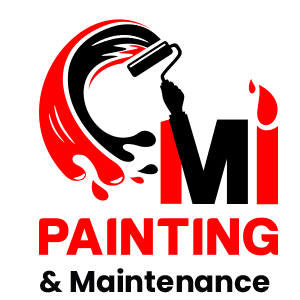When Should Various Primers Be Used In Painting Applications?

You’ve decided to take on a painting project, and you’re eyeing those vibrant colours to transform your space. But, before you dive into the world of paint cans and brushes, there’s a crucial player in the painting process that often goes unnoticed – the primer. In this guide, we’ll unravel the mysteries behind various primers and guide you on when and where to use them for a flawless finish.
What exactly is a primer, and why should you care?
A primer is like the unsung hero of the painting world. It’s a preparatory coat applied to surfaces before the actual paint, creating a smooth and adhesive foundation. Imagine it as the ultimate base layer, ensuring your paint job lasts longer and looks better. But why should you care about it?
Benefits of using primers:
- Enhanced adhesion: Primers act as a bonding agent, helping the paint adhere to the surface more effectively.
- Improved durability: They provide an extra layer of protection, preventing paint from peeling or chipping.
- Even surface: Primers fill in imperfections, creating a uniform surface for the paint application.
What surfaces require specific primers?
Not all surfaces are created equal, and neither are primers. To achieve the best results, it’s essential to match the primer to the specific surface you’re working on.
Surface-specific primers:
- Drywall: Opt for a high-quality latex primer to seal the porous surface and ensure smooth paint application.
- Wood: Use an oil-based primer for wood surfaces to prevent tannin bleed and ensure proper adhesion.
- Metal: Rust-inhibiting primers are your go-to for metal surfaces, protecting against corrosion.
- Masonry: Water-based primers are ideal for masonry, helping to seal and bind the surface for better paint adhesion.
When is it appropriate to use different primers in painting projects?
Choosing the right primer isn’t a one-size-fits-all situation. Different painting projects demand different types of primers to address specific challenges.
Project-specific primers:
- Oil-Based Primers: Perfect for projects requiring stain blocking, such as covering water or smoke stains.
- Water-Based Primers: Ideal for areas with high humidity, like bathrooms and kitchens, as they resist mould and mildew.
- Shellac Primers: Opt for a shellac primer when tackling surfaces susceptible to stains, such as those affected by water damage or featuring knots in wood.
- Bonding Primers: Essential for surfaces that are challenging to paint, like glossy or hard-to-adhere materials.
- High-Build Primers: When you need to fill imperfections or smooth out uneven surfaces, this is your go-to primer.
How can you determine the appropriate drying time between primer and paint application?
Patience is key when it comes to painting. Rushing the drying process can lead to a myriad of issues. Here’s how you can navigate the waiting game.
Drying time guidelines:
- Follow manufacturer recommendations: Different primers have varying drying times, so always adhere to the guidelines provided.
- Climate considerations: Humidity and temperature can affect drying times. Ensure proper ventilation for quicker drying.
- Touch test: Gently touch the primed surface. If it feels dry and cool, it’s likely ready for the next coat.
When is it advisable to skip the primer in your painting project?
While primers are generally a painter’s best friend, there are instances where you might consider skipping this step.
Instances to skip the primer:
- Pre-primed surfaces: Some materials come pre-primed, like certain types of trim or pre-finished cabinets.
- Previously painted surfaces: If the existing paint is in good condition and you’re using a similar paint type, primer may not be necessary.
- Time constraints: In certain situations, such as quick touch-ups, you can bypass the primer for a faster project.
What are some general tips for choosing the right primer for your painting needs?
Selecting the right primer can make or break your painting project. Keep these tips in mind to ensure you make the best choice for your specific needs.
Tips for primer selection:
- Surface analysis: Understand the material you’re working with to choose a primer that addresses its unique characteristics.
- Consider paint compatibility: Ensure the primer is compatible with the type of paint you plan to use for a seamless finish.
- Consult with experts: Seek advice from paint professionals or store experts to get personalised recommendations.
How can you troubleshoot common issues related to primer and paint compatibility?
Even with the best intentions, sometimes issues arise. Knowing how to troubleshoot can save your project.
Troubleshooting tips:
- Peeling paint: Ensure a seamless exterior paint job by examining for surface contaminants or insufficient surface preparation that might lead to peeling. If needed, sand the surface and reapply the primer to prevent the house exterior paint from peeling.
- Streaks or bubbles: Uneven application could be the culprit. Sand the surface lightly and apply a second coat of primer.
- Cracking: Inadequate drying time or extreme temperature fluctuations can cause cracking. Ensure proper drying conditions.
When should you seek a professional for your painting project?
While many painting projects can be DIY, some situations warrant the expertise of a professional.
When to call in the Pros:
- Complex surfaces: Intricate surfaces like ornate woodwork may require a professional’s touch.
- Large-scale projects: For extensive projects, professionals have the experience and tools to ensure a high-quality finish.
- Colour consultation: If you’re unsure about colour choices or matching, a professional can provide valuable advice.
Conclusion
In the vast world of painting, primers play a pivotal role in achieving a flawless finish. By understanding the when, where, and why of using various primers, you empower yourself to tackle any painting project with confidence. Remember, the key lies not just in applying paint but in creating a foundation that makes those colours truly pop. Happy painting!
Ready to embark on your painting journey with confidence? Mi Painting & Maintenance is your trusted partner in transforming spaces with precision and care. Our team of skilled professionals understands the nuances of primer selection, surface preparation, and the art of troubleshooting common painting issues. Whether you’re tackling a DIY project or seeking expert assistance for a large-scale endeavour, Mi Painting & Maintenance has you covered. With a commitment to excellence and a passion for delivering stunning results, we ensure that your painting experience is not just a task but an enjoyable and rewarding process. Contact us today for personalised advice, expert guidance, and a seamless painting experience that brings your vision to life. Let’s make your space truly yours with Mi Painting & Maintenance – where expertise meets artistry.

